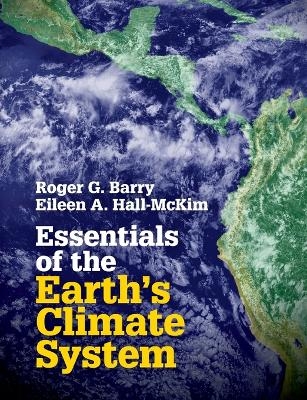
Essentials of the Earth's Climate System
Cambridge University Press (Verlag)
978-1-107-62049-0 (ISBN)
This concise introduction to modern climatology covers the key topics for intermediate undergraduate students on one-semester courses. The treatment of topics is non-mathematical wherever possible, instead focusing on physical processes to allow students to grasp concepts more easily. Full-color illustrations support the text and supplementary topics are covered in boxes, enabling students to further increase their knowledge and awareness. A historical perspective of climatology is woven throughout, providing students with an insight into key scientists and technological developments. Each chapter concludes with a summary of the main points and a mixture of review and discussion questions, encouraging students to check their understanding and think critically. A list of key web links to data and other resources, and solutions and hints to answers to the student questions (password-protected for instructors) are provided online to complete the teaching package.
Roger G. Barry worked for two years in the British Meteorological Office before attending Liverpool University where he received a BA Honours in Geography. He received an MSc in Climatology from McGill University, Montreal, and a PhD from the University of Southampton in 1965. In October 1968 he moved to the University of Colorado, Boulder to become Associate Professor of Geography, Professor (1971–2004) and Distinguished Professor (2004–10). In 1977 he became the Director of the World Data Center for Glaciology, which in 1980 merged into the National Snow and Ice Data Center (NSIDC). Roger's teaching and research has spanned climate change, Arctic and mountain climates, synoptic climatology, and snow and ice processes. Roger has published twenty textbooks, including: Atmosphere, Weather and Climate (with R. J. Chorley, 10th edition, 2010); Mountain Weather and Climate (3rd edition, Cambridge University Press, 2008), Synoptic and Dynamic Climatology (with A. M. Carleton, 2011); The Arctic Climate System (with M. C. Serreze, Cambridge University Press, 2005); The Global Cryosphere: Past, Present and Future (with T. Y. Gan, Cambridge University Press, 2011). He has also published more than 250 research articles and supervised 65 graduate students. Roger has been a Guggenheim Fellow, a Fulbright Teaching Fellow at Moscow State University, and a visiting professor in Australia, France, Germany, Japan, New Zealand, Switzerland and the United Kingdom. His honours include: Fellow, American Geophysical Union; Foreign Member's Medal, Royal Geographical Society, and Humboldt Prize Fellow. He is currently Director of the International CLIVAR Project Office at the National Oceanography Centre, Southampton, UK. Eileen Hall-McKim is a PhD Climatologist receiving her degree from the University of Colorado, Boulder. Her interdisciplinary degrees include work in the geological sciences, hydrology, oceanography, paleoclimatology and water resource research. She completed her MSc at the National Snow and Ice Data Center, Boulder and worked as editor and writer for the Intermountain West Climate Summary of the NOAA/Western Water Assessment. Her honors include: elected member Phi Beta Kappa National Honor Society; Outstanding Women in Geosciences Student Award from the American Association of Women in Geosciences; Graduate Research Fellowship Award from the Cooperative Institute for Research in Environmental Sciences (CIRES); Magna Cum Laude National Honor Society, University of Colorado. She is currently pursuing professional certification in sustainable practices from the University of Colorado law school and environmental science department.
Preface; Acknowledgements; 1. Introduction; 2. Elements of climate: a global view of energy and moisture; 3. Elements of climate: a global view of pressure, winds and storms; 4. Local and microclimates; 5. The general circulation; 6. Circulation modes; 7. Synoptic climatology; 8. Land and sea effects; 9. Climate types on land; 10. Past climates; 11. Future climate; 12. Applied climatology; Appendix: list of units; Glossary; References; Index.
| Erscheint lt. Verlag | 17.3.2014 |
|---|---|
| Zusatzinfo | Worked examples or Exercises; 20 Halftones, unspecified; 110 Halftones, color |
| Verlagsort | Cambridge |
| Sprache | englisch |
| Maße | 188 x 246 mm |
| Gewicht | 600 g |
| Themenwelt | Naturwissenschaften ► Biologie ► Ökologie / Naturschutz |
| Naturwissenschaften ► Geowissenschaften ► Meteorologie / Klimatologie | |
| ISBN-10 | 1-107-62049-X / 110762049X |
| ISBN-13 | 978-1-107-62049-0 / 9781107620490 |
| Zustand | Neuware |
| Haben Sie eine Frage zum Produkt? |
aus dem Bereich


